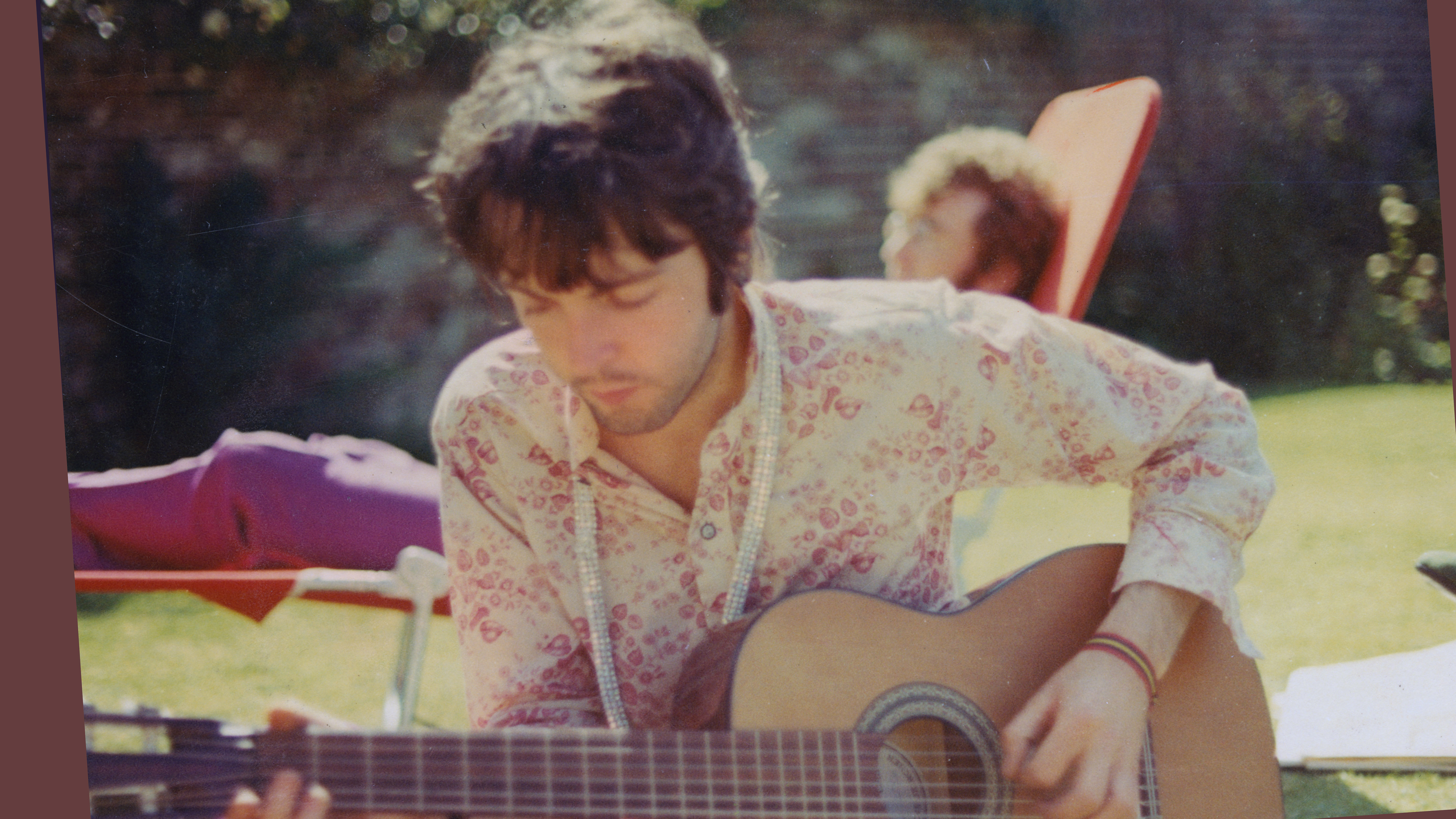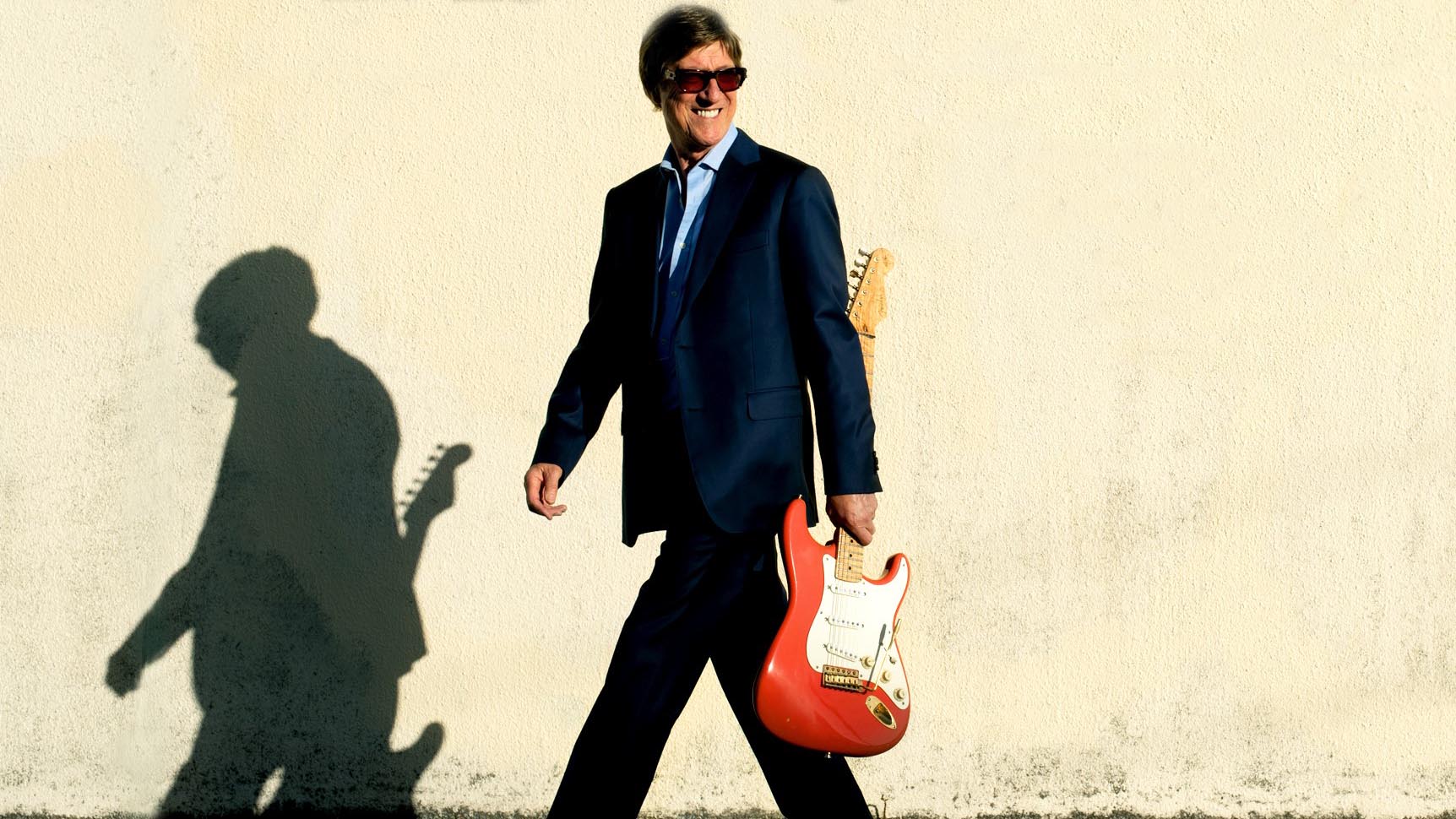4 songs guitarists need to hear by… The Beatles
Guitar gems from the most famous band ever

Even though The Beatles disbanded over 50 years ago, their influence over popular music remains as powerful as ever. Having the luxury of three very different guitarists with very different playing approaches and writing styles, it’s impossible to pin them down to just five songs. But while their back catalogue is as well known as that of Elvis Presley or Jimi Hendrix, there are plenty of hidden nuggets that guitarists who are not Beatles cognoscenti, would do well to seek out.
In many respects Paul McCartney was the group’s most rounded musician, and possibly even its best guitarist. It was he that devised many of the riffs and even played some of the most memorable solos, such as on Taxman (Revolver), Ticket To Ride and his killer Epiphone Casino riff on Paperback Writer.

George Harrison was the band’s most thoughtful player, but when the moment came he could really deliver the goods – check out his plectrum-picked acoustic on Here Comes The Sun and of course the legendary solo on Something from Abbey Road), cited by players including Joe Satriani as one of the most creative ever committed to tape.
Alongside his stunning songwriting abilities, John Lennon’s role in the band was officially that of ‘rhythm guitarist’. But John stepped out on lead on several of the band’s biggest tracks, including Get Back.
However, we thought we’d look deeper into their repertoire to dig out five tracks you may not be so familiar with. Each is notable for John, Paul or George’s six-string contribution, and several feature more than one guitar-playing Beatle in the spotlight.
1. All My Loving (With The Beatles, 1963)
This song was never a single in the UK or USA but it certainly helped the LP With The Beatles to top album charts around the globe. Paul’s self-harmonized vocal and walking bass allow the song to lope along at a cracking tempo.
But check out Lennon’s superb rhythm guitar: the relentless triplet strumming on his short-scale Rickenbacker 325 is the powerhouse driving the song, while his knowledge and use of different chord inversions meant that he stayed in one area of the neck, rather than his fretting hand leaping up and down it.
Want all the hottest music and gear news, reviews, deals, features and more, direct to your inbox? Sign up here.
He was clearly pleased with his work, as he later described it as “a superb piece of guitar”. Harrison was not to be outdone though. His concise Nashville-inspired solo – clearly a nod to legendary picker Chet Atkins and probably performed on his own Gretsch ‘Chet Atkins’ Country Gentleman guitar – offers the perfect foil for the song’s outwardly twee demeanour.
Following a simplified progression specially written for the solo, George used a mix of single notes and double-stop 6ths to create a short but deceptively clever, and highly memorable break.
3. And Your Bird Can Sing (Revolver and Yesterday And Today, 1966)
It was one of the earliest pop or rock songs to feature harmony guitars
Another capo-based song, And Your Bird Can Sing is in E but the rhythm guitars, played by Lennon, again use a ‘D’ shape chord at fret 2. It’s interesting because John plays down strokes, one strum per beat, on each chord. However it’s the lead guitars that mark this one out, since And Your Bird... was one of the earliest pop or rock songs to feature harmony guitars. The Shadows’ 1961 instrumental Nivram (Marvin backwards), is one of the few that predate it.

18 superstar guitarists ask Hank Marvin their burning questions
Harrison and McCartney devised the parts together, and performed them on their matching Epiphone Casino guitars with powerful P-90 pickups. Although Lennon later derided the song as puerile, it is nevertheless a clever and complex piece of guitar work.
George and Paul brilliantly harmonize the E major scale, mostly in 3rds, during the song’s intro, repeating an extended version of the same thing in the middle and at the end. In the middle eights the guitars mostly arpeggiate the chord tones. Eagles guitarist Joe Walsh was convinced that Harrison had played the whole thing himself, in one pass. Joe spent hours learning to play it this way and only later, when he began working with Beatles drummer Ringo Starr, discovered the truth.
4. Happiness Is A Warm Gun (The Beatles, 1968)
It’s well documented that Lennon learnt fingerpicking from Scottish folk singer and songwriter Donovan during the group’s 1968 visit to Rishikesh in India, where they practiced transcendental meditation with the Maharishi Mahesh Yogi. Lennon took to the technique immediately and would employ it on several tracks on the self-titled release from later that year, also known as the White Album.
These included Dear Prudence, the delightful acoustic Julia, and the incredible Happiness Is A Warm Gun. Split into four distinct sections it begins with the dreamy first verse which moves from Bb minor 7 and Bb minor 6, to F minor/add9 and F minor.
John used Donovan’s fingerstyle approach but on electric guitar (probably his stripped-body Epiphone Casino), with fuzz-toned ‘snicks’ behind it. This morphs into the ‘bluesy’ section where the key switches to Bb7. George, who had helped John with the song’s tricky time signature changes, introduces this section with one of the filthiest, most lowdown solos ever.
It’s played on the low strings and contains huge bends and heavy vibrato; we can’t find evidence of it, but wonder could the guitars be tuned down a semitone? It would certainly make George’s string bends easier, and John’s fingerpicking would now be simpler open Am shape chords, rather than the trickier Bbm barre chords.
After a riffy ‘rock n' roll’ section, the tune drifts sublimely into the final ”Happiness is a warm gun” do-wop chorus, featuring perhaps Lennon’s finest lead vocal and brilliant harmonies from all three. Paul is reported to have said it’s the best thing he’d ever heard, and it was generally deemed by the band to be the White Album’s high watermark.
5. The End (Medley, Abbey Road, 1969)
While the dramatic three-guitarist solo during the climactic finale to Abbey Road naturally grabs the intention (it was played in two lots of two-bar chunks by McCartney, Harrison and Lennon in that order and you must definitely check it out), the much more subtle and extremely beautiful guitar solo in The End song itself, is a Harrison mini work of art.
While producer George Martin threw a 30-piece orchestra at this track which lasted all of half a minute or so, and McCartney played piano and sang the immortal couplet, “And in the end the love you take, is equal to the love you make”, George devised a beautiful arpeggiated solo, featuring clean-toned mini sweeps and soulful string bends. His notes follow Paul’s chord sequence perfectly, to provide a most subtle and sophisticated finale to the last ever recorded piece featuring all four Beatles.